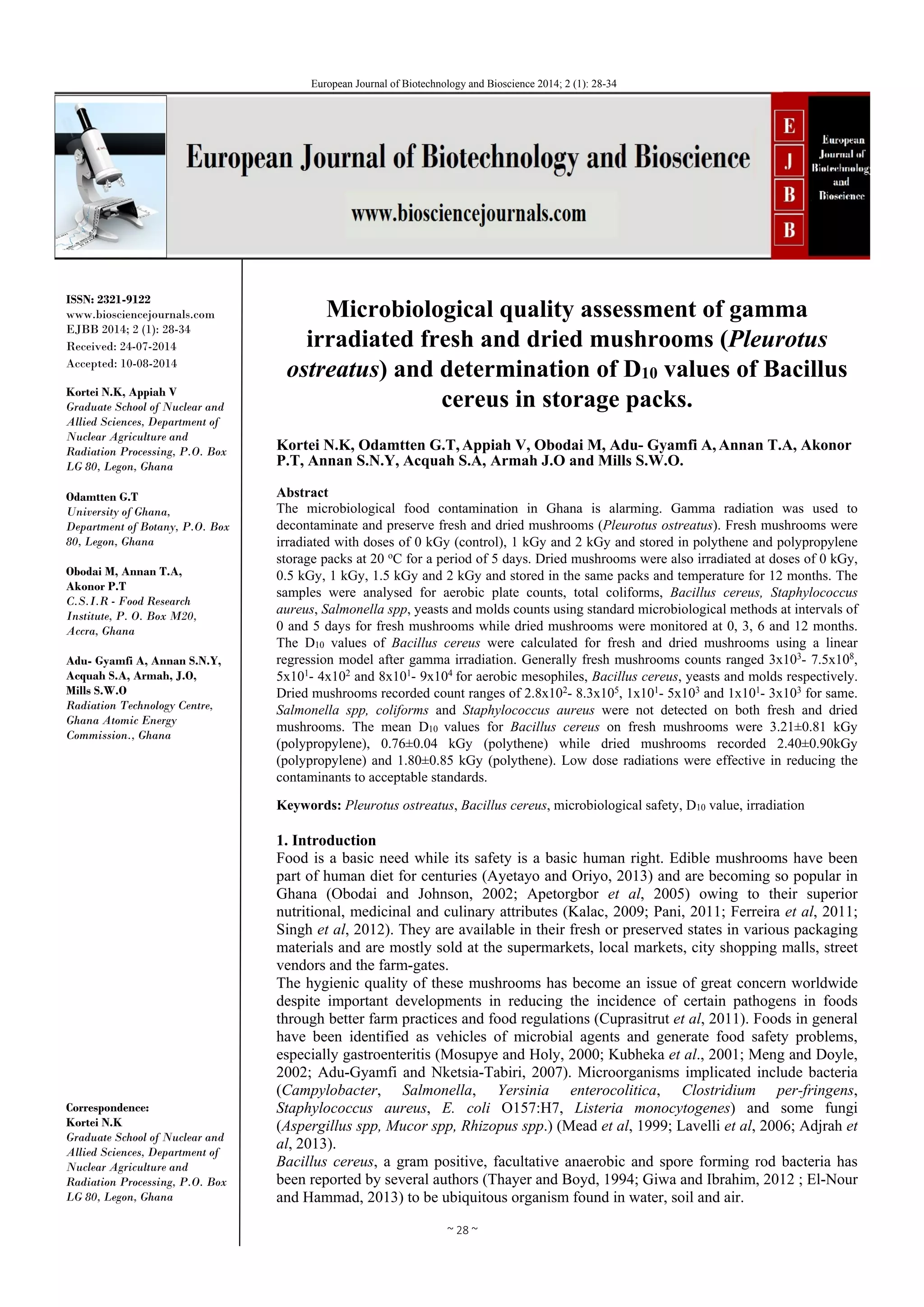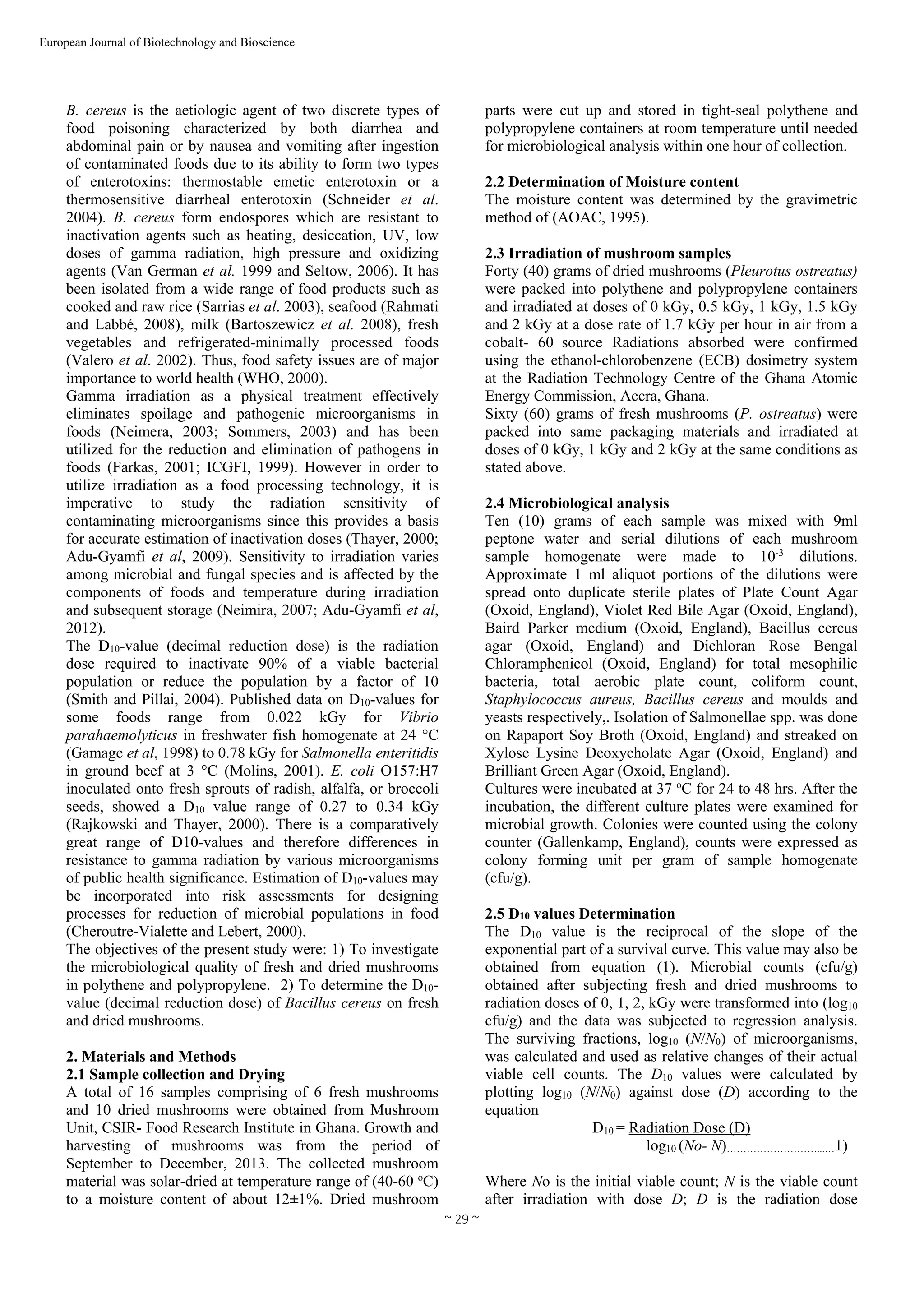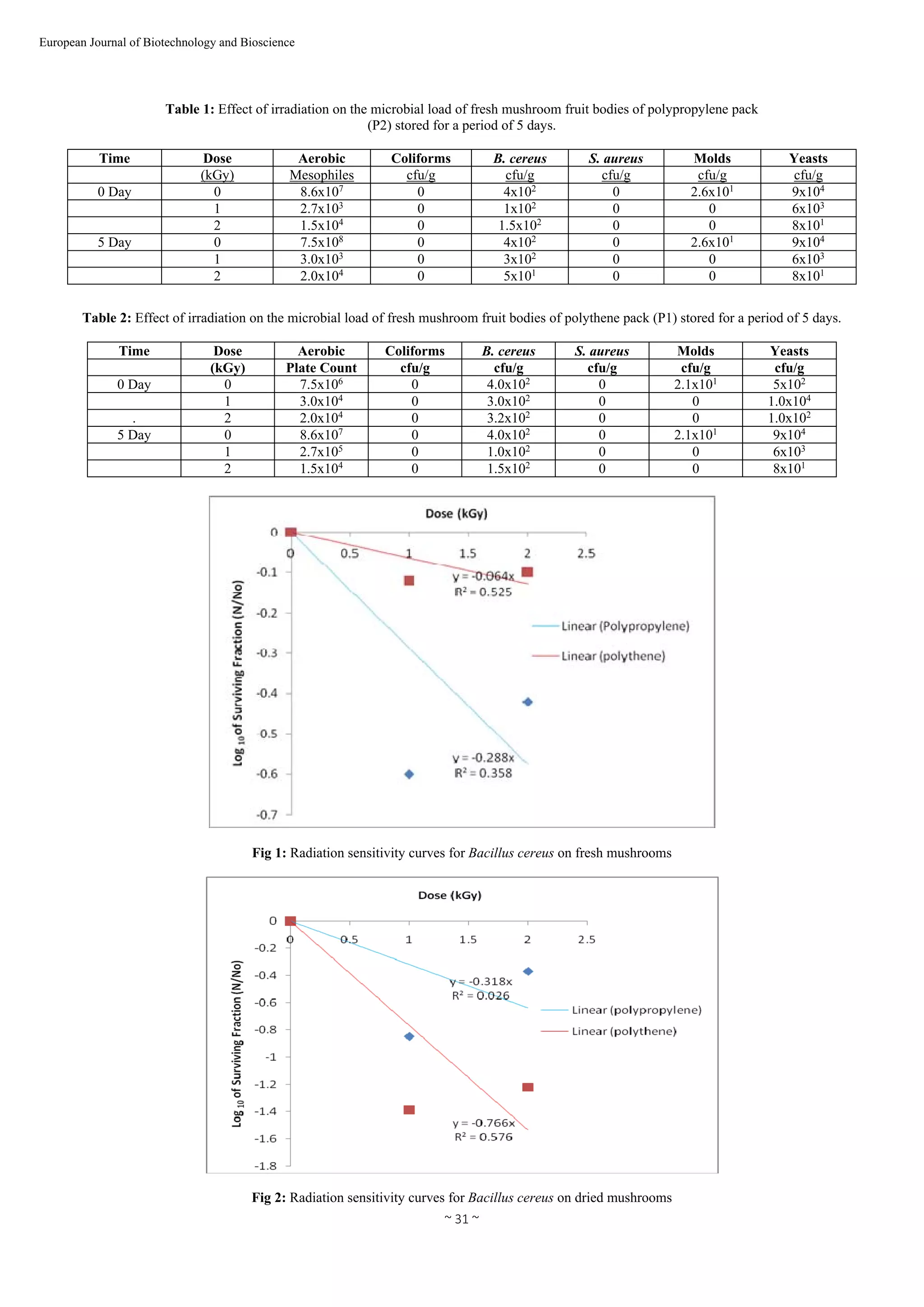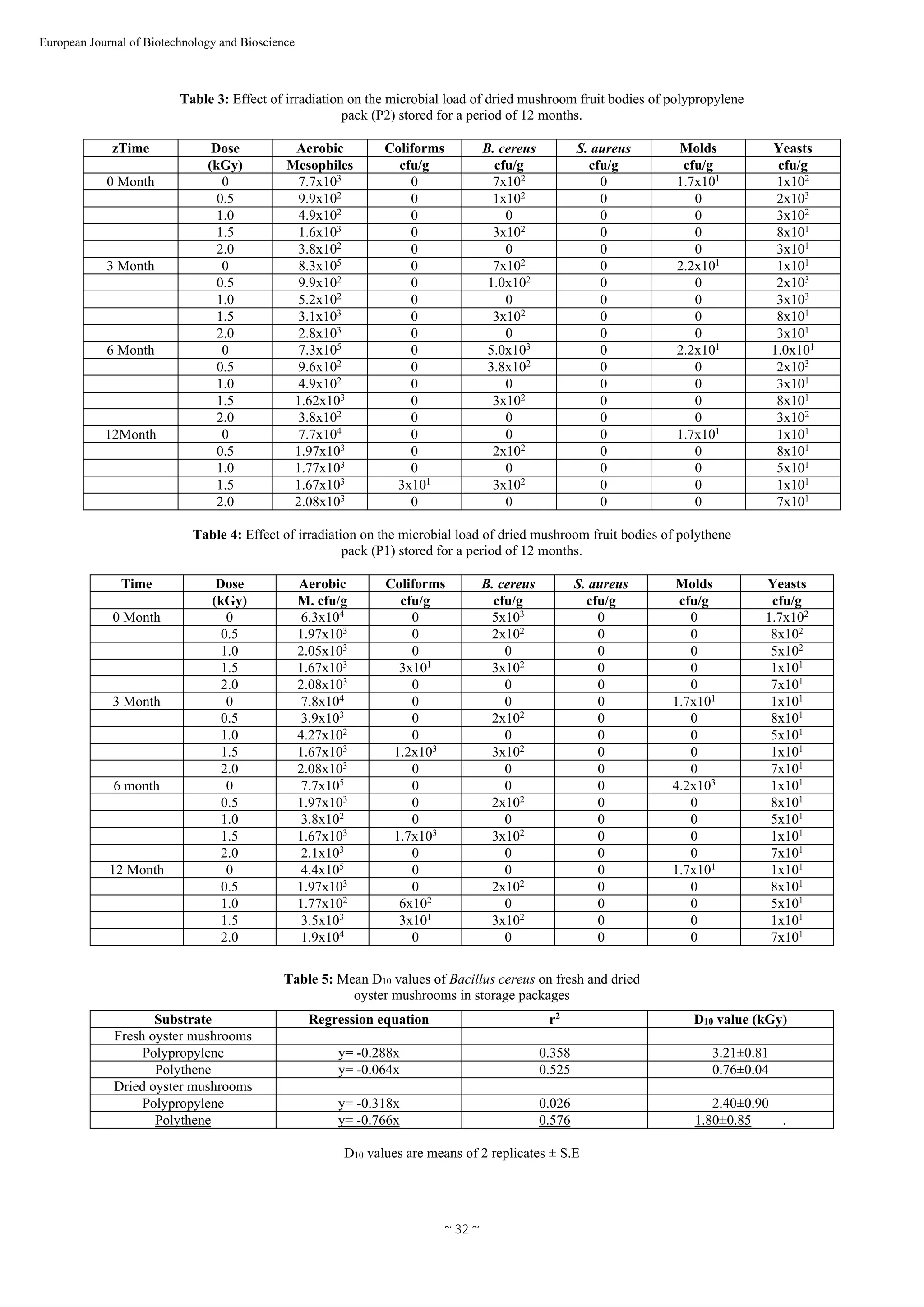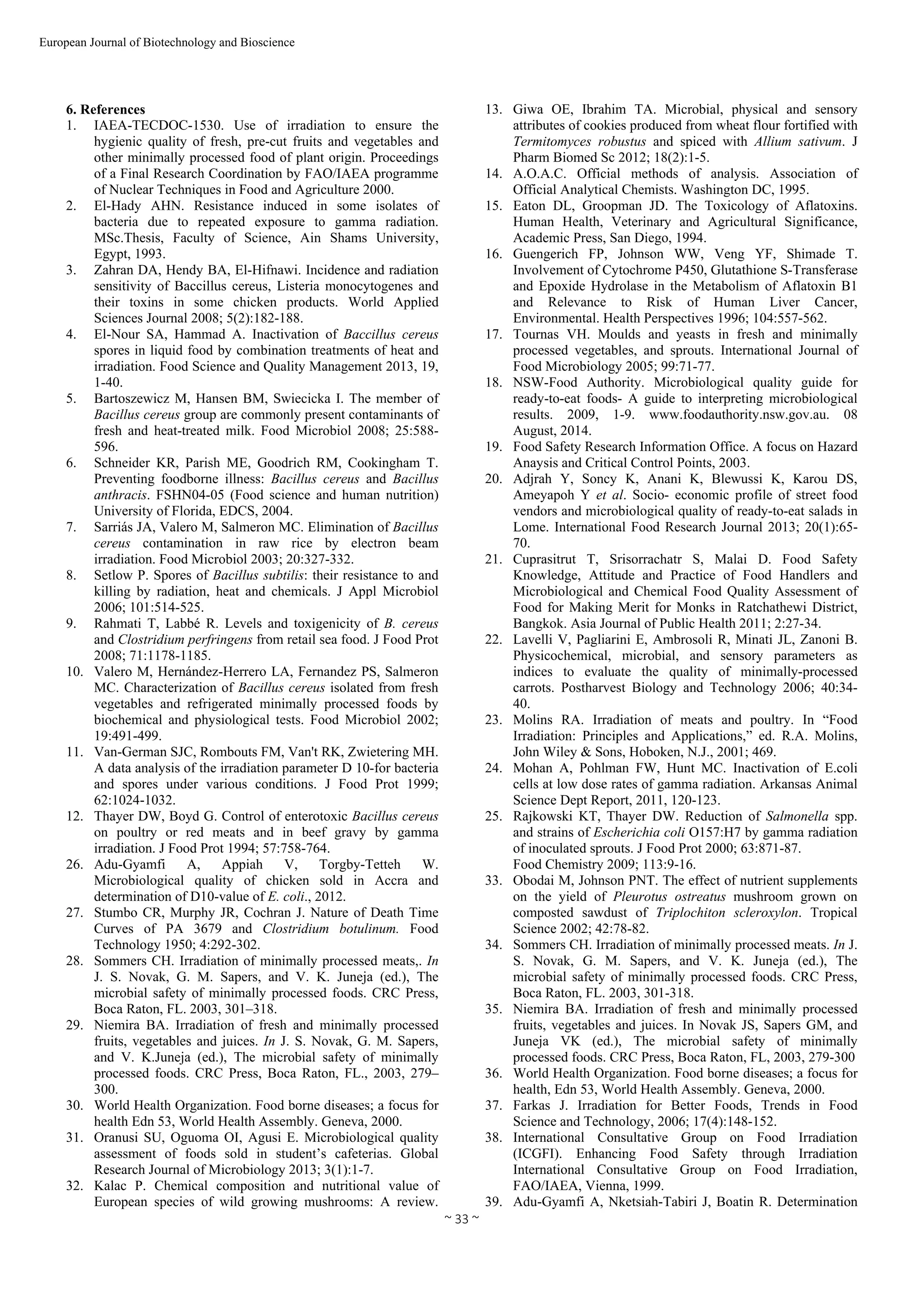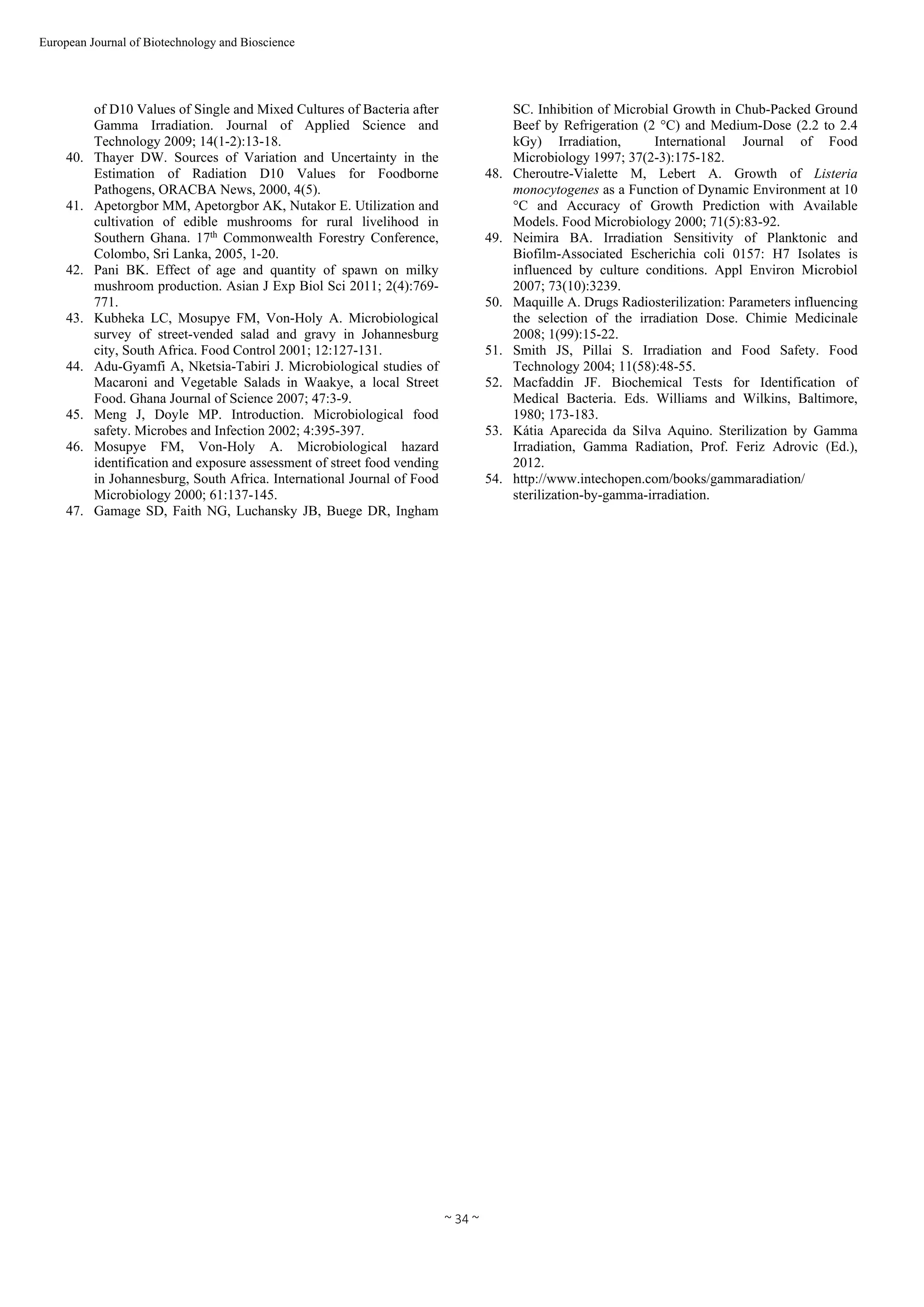This document reports on a study that assessed the microbiological quality and safety of fresh and dried mushrooms (Pleurotus ostreatus) that were gamma irradiated and stored. Fresh mushrooms were irradiated at doses of 0, 1, and 2 kGy and stored for 5 days, while dried mushrooms were irradiated at doses of 0, 0.5, 1, 1.5, and 2 kGy and stored for 12 months. Microbial analysis found that gamma irradiation effectively reduced aerobic mesophiles, Bacillus cereus, and yeast/mold counts in both fresh and dried mushrooms. No Salmonella, coliforms, or Staphylococcus aureus were detected. Decimal reduction doses
